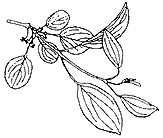Greenacres Links
Landscaping Resources
- Weedlaws
- Toolkit
- Native Vegetation Enhancement
- Wild Ones Handbook
- Homeowners' Resources
- Landscaping Naturally (video)
Remember, we will not post any information intended to directly benefit for-profit enterprises
 Green
Landscaping: Greenacres
Green
Landscaping: Greenacres
Wild Ones Handbook
WHAT EVERY WILD ONE SHOULD KNOW
- How to Naturally Landscape Without Aggravating Neighbors and Village Officials
- Important Causes of Hayfever
- Observational Design
- References
- It Starts With The Soil
- Removing Vegetation
- Handling Wild Seed
- Buying Seed: Pretty Packages No Substitute For Patience and Local Seeds
- Planting A Prairie
- Prairie Maintenance
- Planting A Woodland
- Creating A Water Garden
- Landscaping For Wildlife
- Wood Projects
- Planting Policies
- Aggressive Species
|
"We need natural areas to bring people and Nature
together. We need a place for youth to be wowed by 10-foot-tall
prairie grasses." -
Marlin Johnson |
FROM THE WILD
With property owner permission, you may collect seeds and plants from
the wild -- with the understanding that Nature needs you to leave the
greater portion behind to rejuvenate herself.
You may also rescue great numbers of plants that would otherwise be lost to land development. Watch for indications of impending bulldozer activity, such as real estate signs or surveyor markers. Again with permission, you and other Wild Ones members may be able to take home trunk-loads of flowers, grasses, mosses, sedges, rushes, shrubs, and small trees.
Plant Rescue Procedures:
- Seek out the property owner or real estate developer for permission to trespass.
- Survey the site for indigenous species (ask your chapter president for help).
- Contact your chapter's rescue coordinator. If you do not have a
coordinator,
- you may call the developer, explaining that: you are a member of a non-profit organization that promotes the use of native American plants in home landscapes
- plant rescuers take responsibility for their own safety and are willing to sign release waivers, protecting the property owner from any liability rescuers are willing to dig during whatever hours are convenient to
- the developer the developer can generate good publicity out of their generosity in helping to preserve some native habitat
- Inform fellow Wild Ones members about the exact location of the site, its boundaries, growing conditions and types of plant communities present, and any restrictions imposed by the owner.
- Dig and transplant, cutting back the top third of each forb to reduce transplant shock.
- Express your gratitude. (By maintaining an upbeat,
professional manner and honoring the developer's restrictions, you
may be treated to additional
dig sites in the future by the same developer!)
Beware: If you take plants under any other circumstances, you
risk criminal prosecution.
SOWING FARTHER A FIELD
Wild Ones members often branch out with their natural
landscaping, taking it to their house of worship or place of business.
Oftentimes teachers initiate prairie plantings at schools. An aid to
anyone around the country is the University of Wisconsin-Madison
Arboretum book-and-binder combination called Prairie Restoration for
Wisconsin Schools. It covers every subject you would hope -- cultural
history, definitions, climate and weather, grasses, insects, birds,
mammals, ecosystems, food webs, soil analysis, biodiversity,
restoration, land ownership, mapping skills, plant immigrants,
pollution, site preparation, observation and keeping a journal,
research, and more! Anyone may order Prairie Restoration for Wisconsin
Schools for $20 plus $3 shipping charges (Wisconsin residents add
$1.10 to cover sales tax; schools should send their tax exemption
number). Order from and make checks payable to:
UW-Madison Arboretum
1207 Seminole Hwy.
Madison, WI 53711Prices are subject to change, so it would be wise to check the price by calling (608) 262-2746
 PLANT CHOICE
PLANT CHOICE
Experienced natural landscapers recognize that alien
grasses, flowers, vines, shrubs and trees have come to dominate
dwindling societies of native species. And you will notice as you go
on yard tours that many Wild Ones members have chosen to eliminate all
alien species from their properties. This does not mean that you must
give up Aunt Eva's heirloom hollyhocks, your vintage asparagus patch,
or your teenager's athletic turf. Indeed, good
landscaping takes into account such thoughtful considerations. Wild
Ones disparages only mindless and environmentally irresponsible land
practices. To that end, we not only recommend you get to know the
beautiful native plants of America, but that you make yourself
familiar with some of the marauding bullies
of the vegetative world.
![[logo] US EPA](../gif/logo_epaseal.gif)